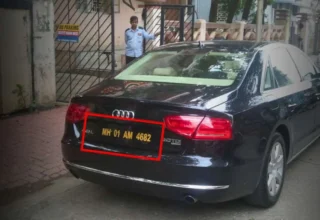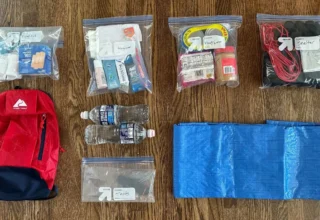
The trucking industry faces a driver shortage that’s been building for years. Companies need drivers on the road to keep freight moving, and that pressure sometimes leads to decisions that put everyone at risk. When a trucking company hires someone who isn’t properly qualified or trained, the consequences can be catastrophic.
Not every person with a commercial driver’s license has the same skill level. Getting a CDL is just the starting point, but some companies treat it as if it’s the finish line. They skip thorough background checks, minimize training time, and put drivers in cabs before they’re ready. The math seems simple from a business perspective: more drivers means more revenue. But that calculation leaves out what happens when an unqualified driver loses control of an 80,000-pound vehicle.
Table of Contents
What Makes a Driver Actually Qualified
Having a valid CDL doesn’t automatically mean someone can safely operate a commercial truck in all conditions. Real qualification involves experience with different weather, various types of cargo, mountain grades, city traffic, and emergency situations. It means understanding how a loaded trailer behaves differently than an empty one, knowing proper following distances at highway speeds, and recognizing when conditions require slowing down or stopping.
Qualified drivers also need clean records. Past traffic violations, especially those involving commercial vehicles, indicate patterns of risky behavior. DUI convictions, reckless driving charges, or multiple at-fault accidents should raise red flags. Some companies either don’t check thoroughly or decide to hire anyway because they need bodies in seats.
Medical fitness matters too. Drivers need to pass Department of Transportation physical exams, but some conditions develop between exams or go unreported. Sleep apnea, vision problems, diabetes that isn’t well controlled, these can all impair driving ability. Companies rushing to hire might not follow up on medical red flags or ensure drivers maintain proper treatment.
The Shortcuts Companies Take
Background checks cost money and take time. Some companies do the bare minimum required by law rather than digging deeper into a driver’s history. They might verify that a CDL is valid but skip calling previous employers to ask why the driver left. Those gaps in employment history often tell important stories that don’t show up on official records.
Training programs get cut short when companies feel pressure to get drivers on the road. Federal regulations require minimum training for entry-level drivers, but companies sometimes treat those requirements as maximum training instead. New drivers might get paired with mentors for a few weeks, but if that mentor is rushing through the process or demonstrates bad habits themselves, the training becomes almost worthless.
Road tests before hiring should be thorough. A proper evaluation takes a driver through varied conditions: backing up, city streets, highway driving, different weather if possible. Some companies do 30-minute test drives on easy routes and call it good. That’s not enough time to see how a driver handles pressure or unexpected situations.
When Driver Shortages Drive Bad Decisions
The trucking industry can’t find enough qualified drivers to meet demand. Wages haven’t kept pace with the demanding lifestyle, regulations have tightened, and fewer people want jobs that keep them away from home for weeks at a time. This shortage puts enormous pressure on hiring managers to fill positions.
Trucking company negligence causing deadly East Texas accidents often traces back to these hiring decisions made under pressure. When companies choose speed over safety in their hiring process, they create risks that extend far beyond their own operations. Every driver they put on the road shares highways with families, commuters, and other commercial vehicles.
Smaller trucking outfits face even more pressure than large carriers. They might not have the resources for extensive training programs or the luxury of being selective about who they hire. One or two drivers calling in sick can mean loads don’t get delivered and contracts don’t get fulfilled. That desperation leads to hiring people who should still be in training or shouldn’t be driving at all.
The Training That Gets Skipped
Proper training goes way beyond learning to shift gears and stay in a lane. Drivers need to understand cargo securement, how to inspect their vehicles thoroughly, what to do when brakes start to fail, and how to handle a jackknife situation. They should know federal regulations about hours of service, weight limits, and hazardous materials even if they don’t plan to haul hazmat loads.
Winter driving requires specific skills that many new drivers never learn properly. Black ice, chain installation, reduced visibility in snow, these aren’t situations where guessing works out well. Mountain driving demands understanding how to use engine braking and when transmission gears matter more than regular brakes. New drivers thrown into these situations without proper preparation make mistakes that cost lives.
Different types of cargo create different challenges. Liquid tankers have surge issues that can destabilize a truck. Flatbed loads need proper securing techniques. Refrigerated units add weight and mechanical complexity. Companies that haul diverse freight should train drivers for what they’ll actually be carrying, but training often focuses on whatever’s easiest to teach rather than what’s most relevant.
Red Flags in Driver Qualification Files
Driver qualification files tell the story of who a company puts on the road. These files should contain employment history, violation records, accident reports, medical certificates, and proof of required training. When accidents happen and these files get reviewed, missing documents or falsified information often come to light.
Some companies accept employment gaps without explanation. A driver who worked for three carriers in two years and has no documentation about why they left each job is probably someone who got fired for cause. Companies that don’t ask questions either don’t care or don’t want to know the answers.
Medical certificates that barely meet minimum standards or show conditions that require monitoring should trigger additional scrutiny. A driver with treated sleep apnea needs to prove they’re using their CPAP machine consistently. One with diabetes needs regular blood sugar monitoring. Companies cutting corners might accept expired certificates or ignore treatment compliance.
Previous accident history should be examined closely, not just counted. A driver with three minor parking lot incidents is different from one with a single injury crash caused by following too closely. The circumstances matter, but companies in a rush to hire sometimes just check boxes without reading the actual reports.
The Ripple Effects of Bad Hiring
When an unqualified driver causes an accident, the damage spreads in every direction. Victims and their families face obvious harm: injuries, medical bills, lost income, pain and suffering. But the consequences reach further than that.
Other drivers for the same company might face increased scrutiny and pressure. Insurance rates for the entire fleet go up. Contracts with shippers might be lost if the company’s safety rating drops. Federal regulators might impose restrictions or fines. In severe cases, companies can be forced out of business entirely.
The driver who wasn’t properly qualified often faces life-changing consequences too. Criminal charges, loss of CDL, lawsuits, and the knowledge that their actions hurt or killed someone. Many of these drivers thought they were ready because their employer told them they were ready. They trusted a company that put profit ahead of proper preparation.
What Actually Prevents These Problems
Better pay and working conditions would help address the driver shortage, which would reduce pressure to hire unqualified people. Companies that invest in drivers through competitive wages, home time, and respect tend to attract better candidates and keep them longer.
Thorough screening takes time but catches problems before they hit the road. Calling previous employers, checking medical records carefully, running complete background checks, these steps cost money upfront but prevent massive costs later. Companies that view safety as an investment rather than an expense make different choices.
Extended training programs create genuinely qualified drivers instead of license holders who panic in tough situations. Pairing new drivers with excellent mentors for months rather than weeks builds real competence. Ongoing education and skills testing help ensure drivers maintain their abilities over time.
Regulatory enforcement matters too. When companies face serious consequences for putting unqualified drivers on the road, they change their practices. Random audits of driver qualification files, penalties that actually hurt, and public disclosure of safety records all push companies toward better hiring standards.
The problem won’t disappear overnight. Driver shortages will continue, pressure to cut costs remains constant, and some companies will always prioritize short-term gains over long-term safety. But understanding how inadequate screening and training creates danger is the first step toward demanding better. Every truck on the highway should be operated by someone genuinely qualified to handle it safely. Anything less puts everyone at risk.














